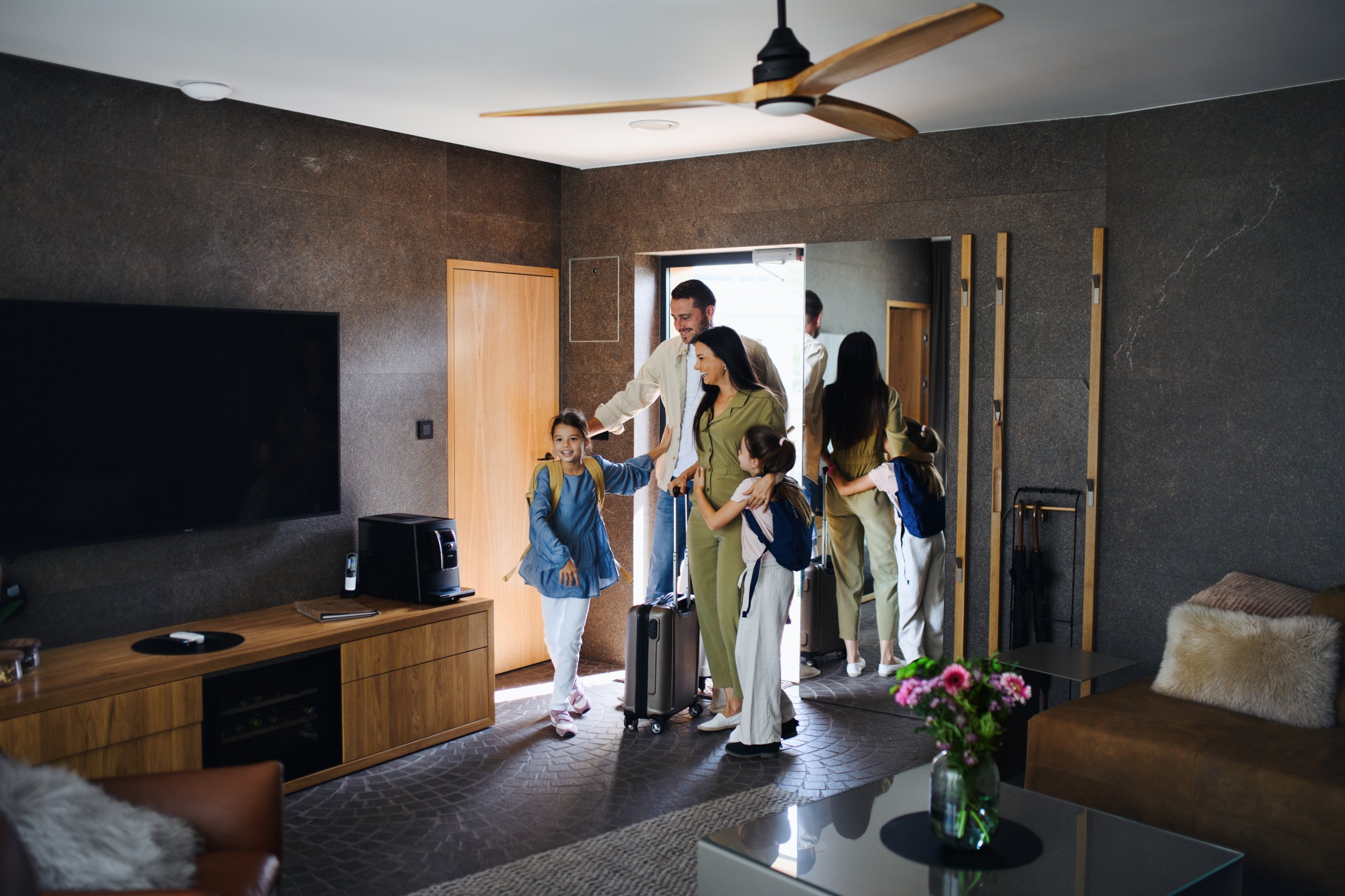Reducing Hotel Energy Costs with IoT: A Comprehensive Guide for CIOs, CTOs, CEOs, and IT Leaders

In the hospitality industry, energy is a top operational expense, accounting for 60-70% of total utility costs in many hotels. Inefficiencies such as HVAC systems running in empty rooms, lights left on in unused spaces, and outdated infrastructure can quietly drain resources, impacting both profitability and sustainability goals.
For IT leaders like CIOs, CTOs, and Heads of Operations, these energy inefficiencies are more than just financial burdens—they represent opportunities for transformation. Leveraging IoT (Internet of Things) solutions, hotels can achieve significant cost savings, optimize energy use, and enhance guest experiences while meeting sustainability benchmarks.
This detailed guide explores how IoT can revolutionize energy management in hotels, offering actionable strategies for decision-makers and illustrating how a Virtual Delivery Center can accelerate implementation.
Common Pain Points
24/7 Operations: Round-the-clock lighting, heating, cooling, and appliances lead to continuous energy consumption.
Occupancy Gaps: HVAC systems and lights often operate at full capacity even when rooms or spaces are unoccupied.
Legacy Infrastructure: Older systems lack the intelligence and connectivity to monitor or optimize energy use.
Guest Behavior: Guests may leave appliances running unnecessarily, leading to wastage.
Reactive Management: Manual processes result in delayed responses to inefficiencies and malfunctions.
Impact on Your ICP (CIOs, CTOs, CEOs, IT Heads):
CIOs/CTOs: Lack of centralized, data-driven systems hinders operational efficiency and innovation.
CEOs: High energy costs eat into profit margins and delay ROI on sustainability initiatives.
IT Heads: Overburdened teams manually handling energy systems cannot focus on strategic IT projects.
IoT offers a data-driven, automated, and intelligent approach to energy management. By integrating connected devices, real-time sensors, and centralized systems, hotels can reduce wastage, monitor energy use, and create more sustainable operations.
IoT-powered smart room systems optimize energy use based on real-time occupancy and guest preferences.
How It Works:
Occupancy Sensors: Detect when guests leave the room and automatically turn off lights, HVAC systems, and other appliances.
Smart Thermostats: Adjust room temperature dynamically based on occupancy, weather, and guest behavior.
Energy Dashboards: Provide room-specific energy data for proactive monitoring and optimization.
ICP Benefits:
CIOs/CTOs: Simplifies integration with existing property management systems (PMS).
CEOs: Delivers cost savings while maintaining luxury standards.
IT Heads: Reduces maintenance loads through automation.
Case Study:
A luxury hotel chain implemented Honeywell INNCOM smart thermostats, resulting in a 20% reduction in HVAC energy costs and improved guest comfort.
Lighting can account for up to 30% of a hotel’s energy bill. IoT-enabled systems dynamically manage lighting across spaces to reduce unnecessary consumption.
Features:
Motion Sensors: Automatically dim or turn off lights in unused areas.
Ambient Light Sensors: Adjust lighting based on daylight levels.
Custom Schedules: Optimize lighting for hallways, conference rooms, and lobbies during off-peak hours.
ICP Benefits:
CIOs/CTOs: Enables centralized control and analytics for better visibility.
CEOs: Achieves quick ROI by cutting lighting expenses.
IT Heads: Simplifies management with user-friendly IoT dashboards.
Top Tool:
Philips Hue Smart Lighting integrates seamlessly into existing hotel ecosystems, reducing lighting costs by up to 40%.
Heating, ventilation, and air conditioning (HVAC) systems are often the largest energy consumers in a hotel. IoT solutions optimize HVAC efficiency while maintaining guest comfort.
How It Works:
Predictive Automation: Adjusts HVAC settings based on real-time data, weather forecasts, and guest patterns.
Zone-Based Control: Manages temperatures independently across different hotel zones (rooms, lobbies, meeting spaces).
Energy Usage Alerts: Identifies inefficiencies and potential faults for proactive action.
ICP Benefits:
CIOs/CTOs: Facilitates integration with AI-driven energy management platforms.
CEOs: Improves operational efficiency without guest disruption.
IT Heads: Reduces workload through automated HVAC monitoring.
Case Study:
A mid-sized hotel chain deployed Siemens Desigo CC, cutting HVAC energy consumption by 30% while maintaining consistent comfort levels.
Water heating and leakage are hidden drains on hotel energy resources. IoT technology addresses these challenges effectively.
Key Features:
Smart Water Heaters: Heat water on demand instead of continuously, reducing energy waste.
Leak Detection Sensors: Instantly identify and alert staff about leaks in plumbing systems.
Usage Analytics: Optimize water heating schedules based on peak demand.
ICP Benefits:
CIOs/CTOs: Enables real-time monitoring and instant alerts.
CEOs: Reduces water-related energy costs by up to 20%.
IT Heads: Ensures efficient resource allocation for issue resolution.
A centralized IoT platform consolidates all energy data and controls into one interface, offering actionable insights for decision-makers.
Features:
Real-Time Dashboards: Monitor energy usage across the entire property.
Analytics: Identify inefficiencies and suggest corrective actions.
Automation: Control multiple systems (lighting, HVAC, water) from a single platform.
Benefits:
CIOs/CTOs: Data-driven decision-making enhances strategic planning.
CEOs: Optimizes operational costs while improving sustainability metrics.
IT Heads: Streamlines system management, freeing up IT resources.
Top Platform:
Enertiv provides comprehensive energy analytics and automation tools tailored to hospitality.
Adopting IoT requires expertise, ongoing support, and a strategy aligned with your hotel's unique needs. This is where the AiDOOS Virtual Delivery Center comes in.
What It Offers:
Customized IoT Implementations: Tailored energy management systems based on your hotel’s operational challenges and guest expectations.
Expert Talent On-Demand: Access seasoned professionals for IoT integration, energy data analysis, and sustainability consulting.
Continuous Optimization: Ongoing monitoring and adjustments to maximize ROI and guest satisfaction.
Cost-Effective Solutions: Scale up or down as needed without long-term commitments.
Advantages:
For CIOs/CTOs: Seamless integration with existing IT infrastructure.
For CEOs: Proven strategies to boost profitability and brand sustainability.
For IT Heads: Reduced operational complexity with 24/7 expert support.
Results You Can Expect:
20-40% Reduction in energy costs across HVAC, lighting, and water systems.
Enhanced guest satisfaction through personalized, energy-efficient environments.
Improved sustainability scores, strengthening your hotel’s reputation.
For decision-makers like CIOs, CTOs, CEOs, and IT Heads, reducing energy costs is more than a financial necessity—it’s an opportunity to lead innovation, enhance guest experiences, and position your hotel as a sustainable brand. IoT-powered solutions, supported by a Virtual Delivery Center, offer the tools and expertise to transform energy management and achieve these goals.

For modern telecom enterprises, delivering exceptional QoS is no longer optional—it’s a brand differentiator and a strategic lever for growth. Static provisioning models won’t cut it in a world of hyper-dynamic data usage.